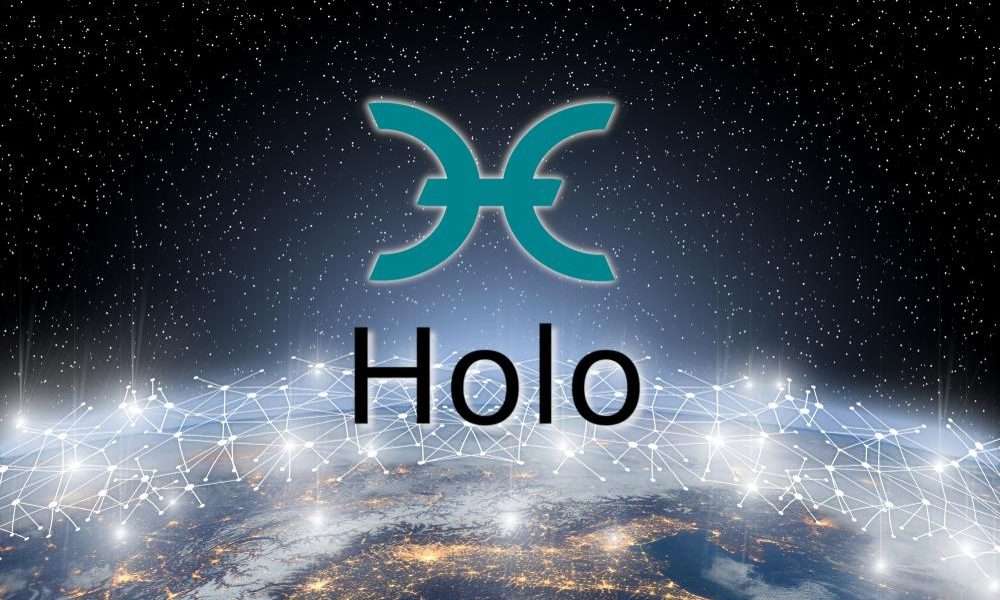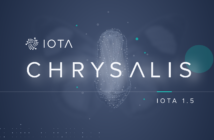What is the Holochain (Holo)?
Put simply, Holochain intends not only to create a decentralized internet, but also a distributed internet that is not tied to the current web hosting model. At first glance, this objective is reminiscent of the Ethereum project, which aims to build a decentralized Internet based on the ETH blockchain. However, Holochain goes one step further and intends to create a distributed Internet, i.e. a distributed computer network that will work faster than the blockchain technology.
The Holo team claims that the Holo network has infinite scalability, so that new distributed applications do not overload the network (comparable to Crypto-Kitties on Ethereum in 2017) even with heavy use. In addition, Holochain also provides an open source framework for creating fully distributed peer-to-peer applications for programming all types of applications.
Holo’s official website says so:
Holochain applications are versatile, resilient, scalable and thousands of times more efficient than the blockchain (no token or mining required). The purpose of Holochain is to enable people to interact with each other by agreeing on a common set of rules without relying on any authority to dictate or unilaterally change these rules. Peer-to-peer interaction means that you own and control your data without intermediaries (e.g. Google, Facebook, Uber) collecting, selling or losing it.
As the statement says, the development team believes they are developing a platform that is far superior to blockchain technology and so forward-looking that it is no longer even recognizable as a blockchain. Instead, the developers call the chain: Holochain.
It is important to know that the Holochain is still under development and is currently (as of January 2019) only undergoing internal testing (see roadmap). Here’s a cool video from Holo team explaining the technology:
How does Holochain work?
As described above, Holochain’s main focus is on distributed computing. The Holochain ecosystem therefore consists of hosts and users of distributed computing. Hosts can host distributed applications and are paid with Holo Fuel for hosting. Users can use the distributed applications.
The Holo team describes the Holochain itself as a “data integrity engine” for distributed applications. The technical basis for this are validating DHTs (Distributed Hash Tables), where each user has its own chain. A transaction is signed and countersigned on each party chain. Once this is done, the information is published in the parties’ shared Distributed Hash Table.
While blockchains such as Bitcoin and Ethereum are currently (January 2019) still struggling with scaling to a large number of users and facing extreme restrictions in use, the Holochain enables sharing via DHTs. The nodes only have to hold parts of the global transactions within the system, which enables massive scaling and should also allow mobile phones to function as nodes.
What is the difference between “decentralized” and “distributed”?
While Holochain is a distributed system, blockchains are “only” decentralized in the sense that there is no central authority that controls the network, but each individual action is sent over the network and must be validated by each node to maintain consensus. The Holochain Protocol has eliminated this need to reach consensus.
Instead, the Holochain hashes (as part of the Distributed Hash Tables) are used to ensure the integrity of the data. Although the proof-of-work consensus (e.g. from Bitcoin) leads to extremely high network security, it also leads to unnecessarily high network utilization (which is why Sharding is developed for Ethereum, and the Lightning Network is developed for Bitcoin) when micro-transactions or transactions outside the money function (e.g. for a decentralized social network) have to be processed.
A blockchain-based micro-blogging platform would be unnecessarily resource-intensive. Why should a global blockchain be validated? To demonstrate the benefits of the platform, Holochain has already developed four apps on its test network:
- a Twitter clone (Clutter)
- a server-less wiki called “FractalWiki”
- Holochat, a chat room for team collaboration and
- DPKI, a cryptographic key management tool.
In addition, Holochain intends to make the blockchain industry more accessible to everyone with its hardware product “Holo Ports“. Holo Ports is a small box that can host the Holochain peer-to-peer network. This special Holochain product is aimed at non-technical people who still want to host their own network.
The following (crowdfunding) video also shows very clearly what Holochain’s goals are and how it wants to achieve them.
Applications for Holochain
Ideal applications for Holochain could be:
- Social Networks
- Supply chain and open value creation networks
- P2P platforms, e.g. cooperative versions of Uber or Airbnb
- Collective intelligence (e.g. governance, workflow, feedback systems)
- Collaborative applications, e.g. chats, discussion forums, wikis
The Holo Token and ICO
The HOT token (Holo) is the temporary token of the Holochain ecosystem. It is an ERC20 standard token based on the Ethereum blockchain, issued to fund the project and will remain in place until the launch of the Mainnet.
The Holochain ICO took place from 29 March to 28 April 2018. The total supply is currently 133,214,575,156 HOT, with Total supply set to increase to 177,619,433,541 HOT as 75 percent of all tokens have been released via crowdsale and 25 percent are currently held by the founding team to fund future expenses.
As soon as the Holochain Mainnet goes into operation, HOT tokens are exchanged for Holo Fuel in a ratio of 1:1. Holo Fuel will be a cryptocurrency that can be considered as “mutual credit if two parties act using a system of credits and debits on one account”. In addition, Holo Fuel is supported by a digital asset, namely the computing power required for an efficient distributed network. This should enable Holo Fuel to remain relatively stable in value once the network has grown to a large extent. The following video offers more detailed information:
Subscribe to our daily newsletter!
No spam, no lies, only insights. You can unsubscribe at any time.
Holochain Roadmap for 2019
The network is currently in the testing phase and all holo ports are also being tested for speed, reliability and scalability. The milestones of the Holo roadmap for 2019 read as follows:
- Holo Closed Alpha Test Network (only available for alpha / beta tester)
- HoloPorts delivery to all IGG testers
- Holo Open alpha test network (available to all buyers of HoloPorts in the IGG)
- The Holo Full Feature Test Network (this will be the release with a test network from Holo Fuel)
- Holo Beta Mainnet
Is an investment in Holo worthwhile?
Holochain is a very ambitious project, which wants to stand out from “normal” blockchains like Ethereum. Instead of a decentralized model, it uses a distributed model to create a leaner, more efficient network. However, whether the project will be able to meet the high expectations remains to be seen. As long as the Mainnet has not yet started, forecasts are difficult. In this respect, it is first and foremost an interesting project that still has to show how well it will develop in the course of next year(s).





